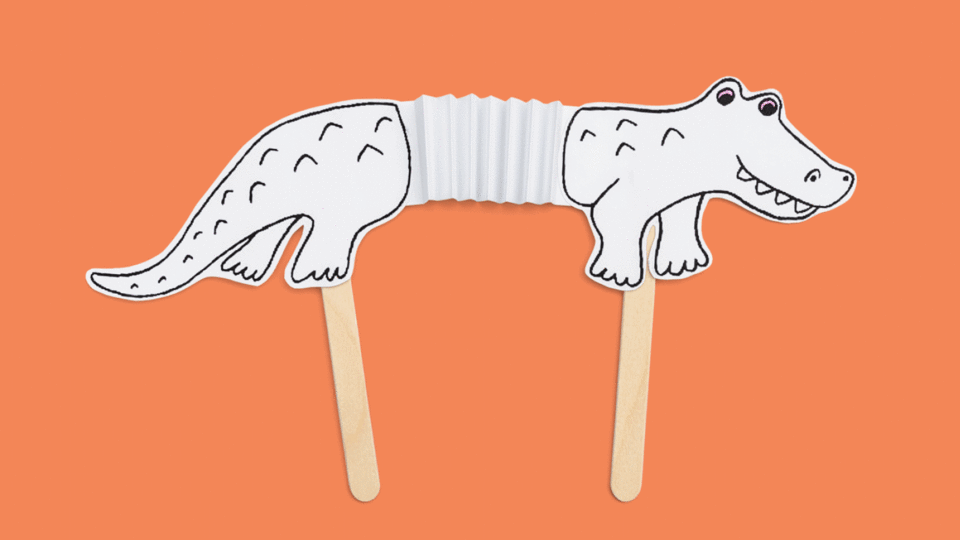
Mucky. Oozy. Slimy. Spooky. Swamp things ages 8-11 are invited to explore this mysterious realm where cypress trees sway and ancient reptiles roam.
With their eerie atmosphere and extra-large inhabitants, the swamps, bogs, marshes, and wetlands of the Southeastern United States capture the imagination like few other ecosystems can. Get acquainted with the incredible biodiversity of swamps through engaging videos, creature crafts, and more.
Please note: While Science @ Home activities are designed to be conducted by kids, some little ones might need adult help with reading instructions and preparing crafts.
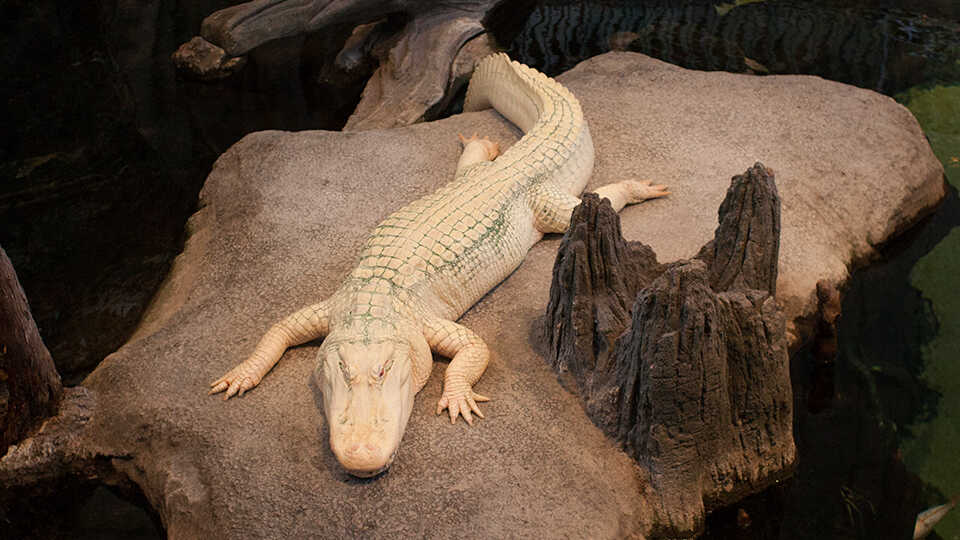
Day 1: Step into the swamp
Wade into the unique world of wetlands and meet some of the unusual animal residents that meander through its murky waters. (30-45 minutes)
Get your feet wet with Academy educator Melissa as she leads you on a tour of the cypress swamp habitat at the Academy. Halfway through, follow along with a draw-the-swamp activity—all you need are markers, a piece of tape, and three pieces of paper. (You can also use this template if you like.)
While you watch this video, think about the three questions below. Share your answers with a friend or family member or just think in your head.
- Alligators are ambush predators who wait for their prey to get close before they pounce. What does that remind you of? Can you think of any other animals that might be ambush predators?
- What do you notice about the teeth on the alligator and crocodile skulls? What do you think they like to eat?
- What are some ways alligators impact the swamp?
Swamp habitats provide a home for many different kinds of plants and animals. A few of them are hidden in this word search. Looking forward, backward, down, up, and diagonally, how many hidden words can you find?
Artist Michael Bartalos created the snazzy swamp creatures for this coloring page. Color them in and see if you can identify all four animals.
Elevate swamp fashion by constructing your own paper Claude visor in a few easy steps.
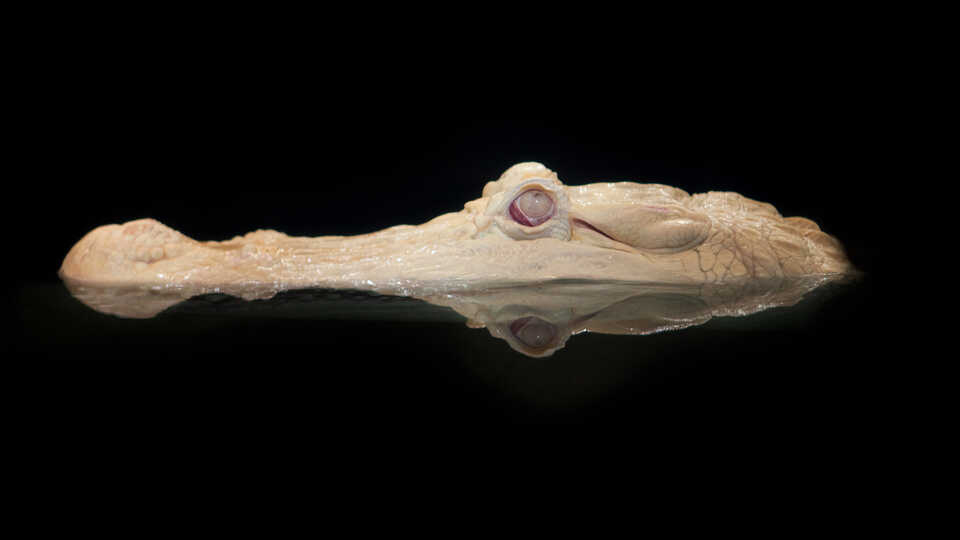
Day 2: Alligator obsession
The American alligator (Alligator mississippiensis) is North America’s largest reptile, reaching lengths of up to 15 feet and tipping the scales at up to half a ton. Learn more about these cold-blooded behemoths—including Claude, the Academy’s beloved alligator with albinism. (45-60 minutes)
Claude stars in his very own storybook! Settle in for storytime with author Emma Bland Smith and discover how he got to the Academy and what makes him such a special and important animal.
While you watch this video, think about the four questions below. Share your answers with a friend or family member or just think in your head.
- Today, we call an albino animal an animal with albinism. How could having albinism make it harder for an alligator to survive in its natural habitat?
- What would you do to safely transport a huge alligator across a continent?
- How do you think it could help an animal to live with other animals, even if they are different species?
- What’s something that makes you different? What’s one thing you love about that difference?
Grab a pencil and follow along with Academy educator Alex for a step-by-step Claude drawing lesson.
World-class care for our nearly 40,000 animals is the Academy’s top priority. Meet Academy biologist Jenoh as he feeds Claude and explains what it takes to keep an alligator happy and healthy.
While you watch this video, think about the four questions below. Share your answers with a friend or family member or just think in your head.
- What does Claude eat at the Academy? How do you think that compares with alligators in their natural habitat?
- As a biologist at the Academy, what would you look for when doing a check-up on Claude?
- Why is it important to train Claude during feeding sessions?
- What other animals do you notice living in the Swamp?
Alligators may have thick skin, but they’re pretty sensitive, too. Learn more about their surprisingly delicate sense of touch with Academy biologist Brian.
While you watch this video, think about the four questions below. Share your answers with a friend or family member or just think in your head.
- What does the word “sensitive” mean? Can you think of any other meanings?
- What part of an alligator’s body is extra sensitive to touch, like pressure and vibration?
- How might this sensitivity help an alligator survive in its natural habitat?
- Do you think alligators would be sensitive in the same way if they didn’t hunt and live in the water? Why or why not?
You’d need a lot of paper to make a 10-foot ‘gator, so set your sights on this cute Claude craft instead. Print out the template, follow the instructions, and start stretching!
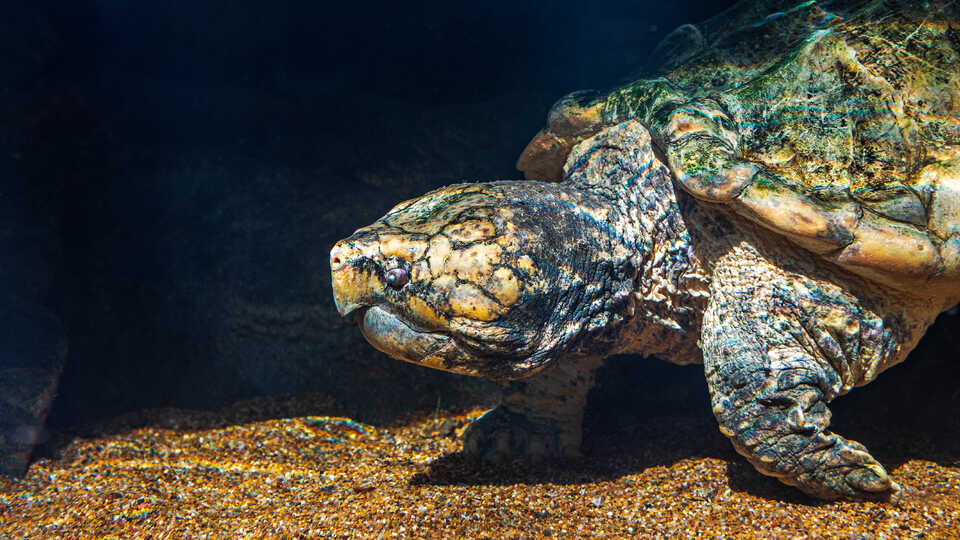
Day 3: Turtle power
Another armored giant, the alligator snapping turtle (Macrochelys temminckii) is North America’s largest freshwater turtle. Get to know these powerful predators who also happen to share Claude’s Swamp habitat. (45-60 minutes)
Their camouflage may allow them to blend into the background, but today our turtles take center stage. Learn more about the Academy’s three alligator snapping turtles and how they get along with their toothy roommate.
While you watch this video, think about the three questions below. Share your answers with a friend or family member or just think in your head.
- Think back to the last time you saw a turtle. What was its habitat like? Was it warm or cold, dry or wet? Were there any other plants or animals around?
- If you wanted to camouflage and blend into a swamp environment, how would you need to change the way you look?
- All animals need food, water, and a place to live. How can you help protect the animals in a habitat near you?
It’s time to compare craniums! Step into the Naturalist Center with Academy educator Katy as she demonstrates the differences and similarities between the skulls of an alligator snapping turtle and an American alligator.
Zoom, spin, and rotate this 3D alligator snapping turtle specimen while practicing your skull-sketching skills...and keeping your fingers.
As you investigate the specimen, think about the five questions below. Share your answers with a friend or family member or just think in your head.
- What do you notice about the skull? Does it remind you of anything?
- Do you see any teeth? Based on its mouth, what do you think this turtle likes to eat?
- Do you notice parts of the skull with different colors? Why do you think they’re different?
- What could the different holes and openings in the skull be for?
- What else can you guess about this animal just by looking at its skull?
Oh, snap! Make an alligator snapping turtle with a worm-shaped tongue and practice “chomping” some fish.
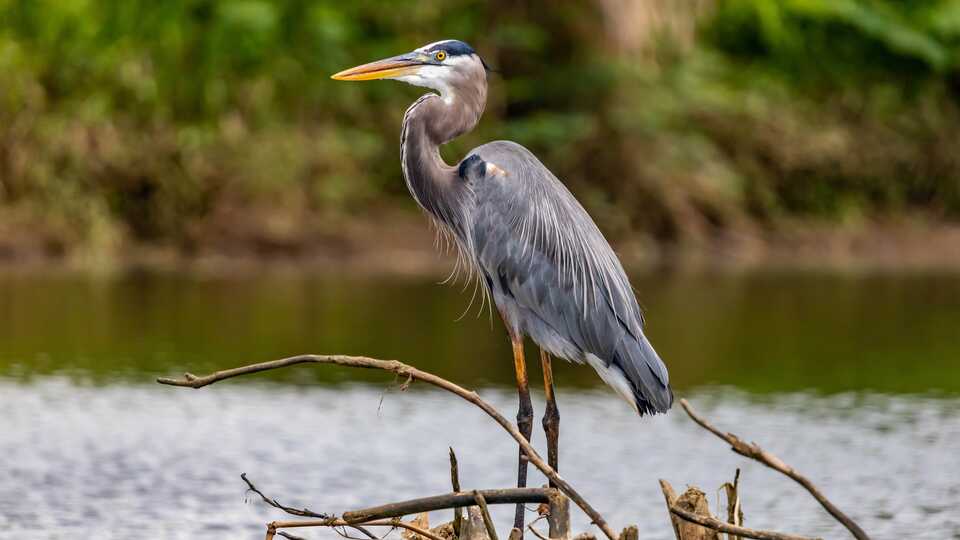
Day 4: Caring for the swamp
Wetlands are crucially important ecosystems that filter water, prevent flooding, and nurture biodiversity. Sadly, they’re also under threat. Find out how swamps and other wetlands are vital for human and animal survival—and how you can help protect them. (30-60 minutes)
The Bay Area has lost 90% of its wetlands over the last 200 years, which means it’s absolutely critical to protect what remains. Join Academy educator Jahnine for an inspiring journey into the wetland in her backyard.
While you watch this video, think about the two questions below. Share your answers with a friend or family member or just think in your head.
- Have you ever visited a wetland like an estuary, marsh, or swamp? What did you see there?
- Why do you think it’s important to help protect wetlands?
Swamps are proof that looks can be deceiving. Despite their muddy appearance, wetlands are brilliant at improving water quality thanks to their layers of natural materials acting as filters. Make your own mini-swamp to see the filtration in action.
Intrepid Academy educators Louise and Laura venture out to collect natural materials for their “swamp in a bottle” and then demonstrate how swamps and other wetlands filter water.
Head to Florida for a cypress swamp safari—and don’t forget your crayons! See if you can spot all the animals lurking in the scene.
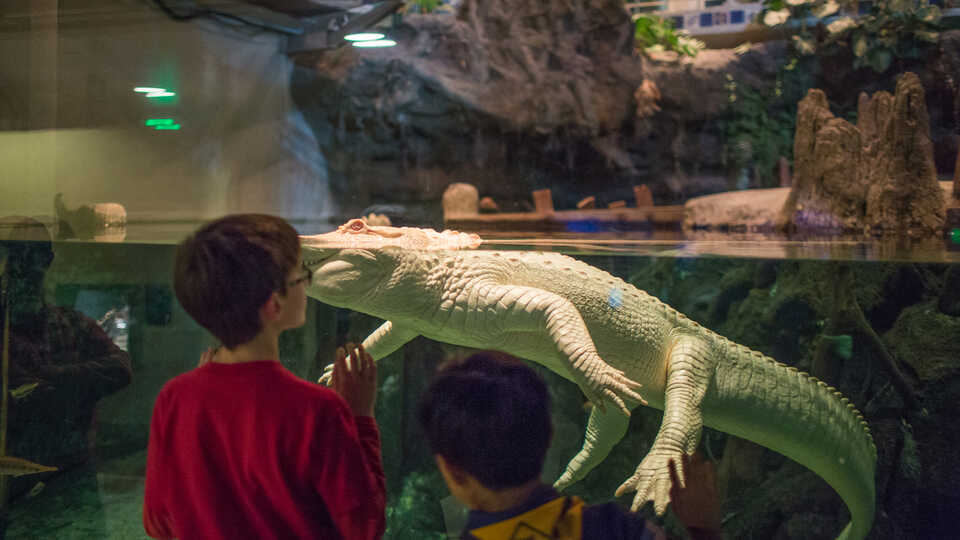
Kid & caregiver extension activities
Congrats on completing Day 4—but don’t say goodbye to the swamp just yet! Sink your teeth into more alligator-themed activities and resources.
Working together can make a difference. This brief article highlights a helpful relationship between two unlikely swamp animals.
While you read this article, think about the three questions below. Share your answers with a friend or family member or just think in your head.
- How do wading birds benefit from living near alligators?
- How do alligators benefit from living near wading birds?
- Can you think of other mutualistic relationships between living things? (Mutualistic relationships are those that benefit both of the living things involved.)
The American alligator is the apex predator of the Southeastern swamps, but in the not-so-distant past, it was critically endangered. Learn more about how alligators came back from the brink.
While you watch this video, think about the three questions below. Share your answers with a friend or family member or just think in your head.
- How do alligators help other animals in the swamp?
- Why did American alligators become an endangered species?
- Are American alligators still endangered? Why or why not?
Content advisory: This video includes graphic images of alligators eating prey and may not be appropriate for some viewers.
Enjoy an eclectic array of science content for all ages, from distance learning resources to in-depth livestreams.